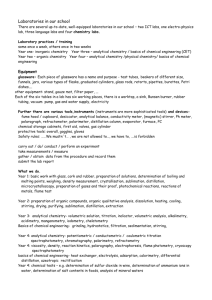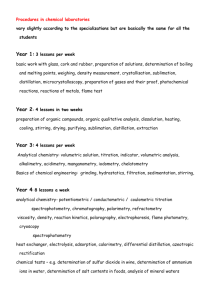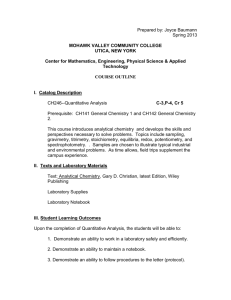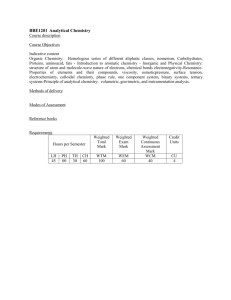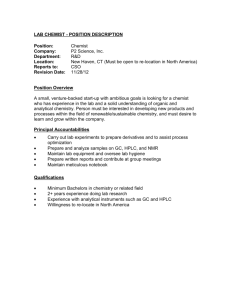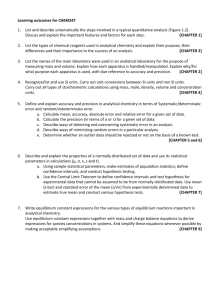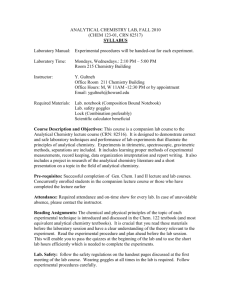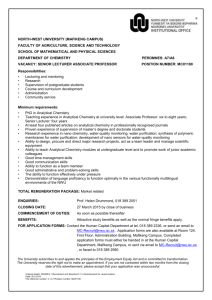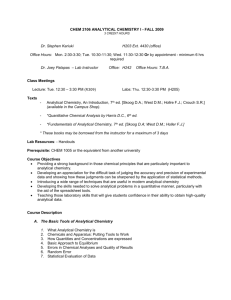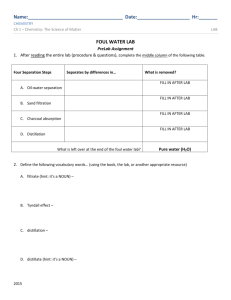Laboratories in our school
advertisement
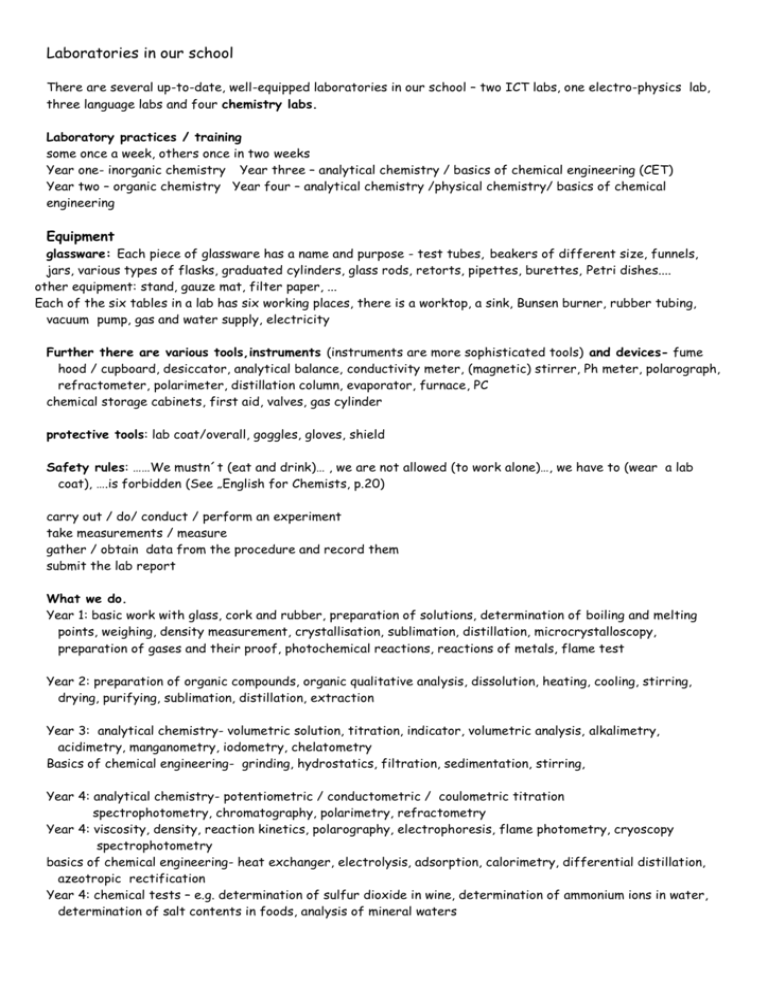
Laboratories in our school There are several up-to-date, well-equipped laboratories in our school – two ICT labs, one electro-physics lab, three language labs and four chemistry labs. Laboratory practices / training some once a week, others once in two weeks Year one- inorganic chemistry Year three – analytical chemistry / basics of chemical engineering (CET) Year two – organic chemistry Year four – analytical chemistry /physical chemistry/ basics of chemical engineering Equipment glassware: Each piece of glassware has a name and purpose - test tubes, beakers of different size, funnels, jars, various types of flasks, graduated cylinders, glass rods, retorts, pipettes, burettes, Petri dishes.... other equipment: stand, gauze mat, filter paper, ... Each of the six tables in a lab has six working places, there is a worktop, a sink, Bunsen burner, rubber tubing, vacuum pump, gas and water supply, electricity Further there are various tools,instruments (instruments are more sophisticated tools) and devices- fume hood / cupboard, desiccator, analytical balance, conductivity meter, (magnetic) stirrer, Ph meter, polarograph, refractometer, polarimeter, distillation column, evaporator, furnace, PC chemical storage cabinets, first aid, valves, gas cylinder protective tools: lab coat/overall, goggles, gloves, shield Safety rules: ……We mustn´t (eat and drink)… , we are not allowed (to work alone)…, we have to (wear a lab coat), ….is forbidden (See „English for Chemists, p.20) carry out / do/ conduct / perform an experiment take measurements / measure gather / obtain data from the procedure and record them submit the lab report What we do. Year 1: basic work with glass, cork and rubber, preparation of solutions, determination of boiling and melting points, weighing, density measurement, crystallisation, sublimation, distillation, microcrystalloscopy, preparation of gases and their proof, photochemical reactions, reactions of metals, flame test Year 2: preparation of organic compounds, organic qualitative analysis, dissolution, heating, cooling, stirring, drying, purifying, sublimation, distillation, extraction Year 3: analytical chemistry- volumetric solution, titration, indicator, volumetric analysis, alkalimetry, acidimetry, manganometry, iodometry, chelatometry Basics of chemical engineering- grinding, hydrostatics, filtration, sedimentation, stirring, Year 4: analytical chemistry- potentiometric / conductometric / coulometric titration spectrophotometry, chromatography, polarimetry, refractometry Year 4: viscosity, density, reaction kinetics, polarography, electrophoresis, flame photometry, cryoscopy spectrophotometry basics of chemical engineering- heat exchanger, electrolysis, adsorption, calorimetry, differential distillation, azeotropic rectification Year 4: chemical tests – e.g. determination of sulfur dioxide in wine, determination of ammonium ions in water, determination of salt contents in foods, analysis of mineral waters
